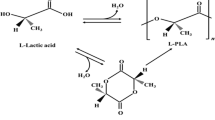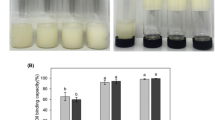Abstract
This study investigated, for the first time, thermal transformations of heavy oil asphaltenes using a stepwise thermal decomposition method under conditions that enable a researcher to properly consider variations in the bond energies of asphaltene molecules and to minimize the occurrence of secondary reactions with newly-formed products. Based on the thermolysis material balance, it was found that at temperatures up to 290°C, the asphaltene conversion rate exceeds 90%, and asphaltene transformations involve the formation of considerable amounts of gaseous compounds, liquid hydrocarbons, and resins, the total content of which reaches 50 wt %. The structural variations in asphaltenes during thermolysis were evaluated by 1H NMR spectroscopy, elemental analysis, and cryoscopic measurement of average molecular weight in naphthalene. It was demonstrated, using various physicochemical analytical methods, that the stepwise thermolysis of asphaltenes is accompanied by a 1.5-fold increase in the average molecular weight of their molecules due to recombination reactions of newly-formed macroradicals. After thermolysis at 230°C, all the tested asphaltenes display an almost identical distribution of carbon atoms among the aromatic, naphthenic, and paraffinic fragments of their molecules regardless of the composition and structure of the initial asphaltenes. The asphaltene reactivity up to 230°C is determined by the number of sulfur- and oxygen-containing fragments labile under the imposed conditions. At higher temperatures, the key feature crucial for asphaltene reactivity is the carbon skeleton structure of asphaltene molecules.







Similar content being viewed by others
REFERENCES
Abukova, L.A. and Shuster, V.L., Expozits. Neft’ Gaz, 2016, no. 7, pp. 12–15.
V’yukov, M.G., Vopros. Otrasl. Upravlen., 2016, no. 3, pp. 49–59.
Sabbah, H., Morrow, A.L., Pomerantz, A.E., and Zare, R.N., Energy Fuels, 2011, vol. 25, no. 4, pp. 1597–1604. https://doi.org/10.1021/ef101522w
Grin’ko, A.A. and Golovko, A.K., Petrol. Chem., 2011, vol. 51, no. 3, pp. 192–202. https://doi.org/10.1134/S0965544111030066
Antipenko, V.R., Grin’ko, A.A., and Melenevskii, V.N., Petrol. Chem., 2014, vol. 54, no. 3, pp. 178–186. https://doi.org/10.1134/S0965544114030037
Schule, B., Meyer, G., Pena, D., Mullins, O.C., and Gross, L., J. Am. Chem. Soc., 2015, vol. 137, no. 31, pp. 9870–9876. https://doi.org/10.1021/jacs.5b04056
Tang, W., Hurt, M.R., Sheng, H., Riedeman, J.S., Borton, D.J., Slater, P., and Kenttamaa, H.I., Energy Fuels, 2015, vol. 29, no. 3, pp. 1309–1314. https://doi.org/10.1021/ef501242k
Cheshkova, T.V., Sergun, V.P., Kovalenko, E.Yu., Gerasimova, N.N., Sagachenko, T.A., and Min, R.S., Energy Fuels, 2019, vol. 33, no. 9, pp. 7971–7982. https://doi.org/10.1021/acs.energyfuels.9b00285
Ganeeva, Yu.M., Yusupova, T.N., and Romanov, G.V., Russ. Chem. Rev., 2011, vol. 80, no. 10, p. 993. https://doi.org/10.1070/RC2011v080n10ABEH004174
Ghosh, A.K., Chaudhuri, P., Kumar, B., and Panja, S.S., Fuel, 2016, vol. 185, pp. 541–554. https://doi.org/10.1016/j.fuel.2016.08.031
Mart’yanov, O.N., Larichev, Yu.V., Morozov, E.V., Trukhan, S.N., and Kazaryan, S.G., Russ. Chem. Rev., 2017, vol. 86, no. 11, p. 999. https://doi.org/10.1070/RCR4742
Khadzhiev, S.N. and Shpirt, M.Ya., Mikroelementy v neftyakh i produktakh ikh pererabotki (Trace Elements in Oils and Products of Their Processing), Moscow: Nauka, 2012.
Khalikova, D.A., Petrov, S.M., and Bashkirtseva, N.Yu., Vestn. Kazan. Tekhnol. Univ., 2013, no. 3, pp. 217–221.
Ancheyta, H., Modeling of Processes and Reactors for Upgrading of Heavy Petroleum, Boca-Raton: CRC Press, 2013.
Ramirez-Corredores, M.M., The Science and Technology of Unconventional Oils: Finding Refining Opportunities, London: Academic Press, 2017.
Lyadov, A.S. and Petrukhina, N.N., Russ. J. Appl. Chem., 2018, vol. 91, no. 12, pp. 1912–1921. https://doi.org/10.1134/S1070427218120029
Magomedov, R.N., Pripakhailo, A.V., Maryutina, T.A., Shamsullin, A.I., and Ainullov, T.S., Russ. J. Appl. Chem., 2019, vol. 92, no. 13, pp. 1634–1648. https://doi.org/10.1134/S1070427219120036
Hauser, A., Bahzad, D., Stanislaus, A., and Behbahani, M., Energy Fuels, 2008, vol. 22, no. 1, pp. 449–454. https://doi.org/10.1021/ef700477a
Dmitriev, D.E. and Golovko, А.K., Petrol. Chem., 2010, vol. 50, no. 2, pp. 106–113. https://doi.org/10.1134/S0965544110020040
Kopytov, M.A., Golovko, A.K., Kirik, N.P., and Anshits, A.G., Petrol. Chem., 2013, vol. 53, no. 1, pp. 14–19. https://doi.org/10.1134/S0965544113010076
Al Humaidan, F.S., Hauser, A., Rana, M.S., and Lababidi, H.M.S., Energy Fuels, 2016, vol. 30, no. 4, pp. 2892–2903. https://doi.org/10.1021/acs.energyfuels.6b00261
Al Humaidan, F.S., Hauser, A., Rana, M.S., and Lababidi, H.M.S., Energy Fuels, 2017, vol. 31, no. 4, pp. 3812–3820. https://doi.org/10.1021/acs.energyfuels.6b03433
Chacon-Patino, M.L., Blanco-Tirado, C., Orrego-Ruiz, J.A., Gomez-Escudero, A., and Combariza, M.Y., Energy Fuels, 2015, vol. 29, no. 10, pp. 6330–6341. https://doi.org/10.1021/acs.energyfuels.5b01510
Leon, A.Y., Guzman, A., Laverde, D., Chaudhari, R.V., Subramaniam, B., and Bravo-Suarez, J.J., Energy Fuels, 2017, vol. 31, no. 4, pp. 3868–3877. https://doi.org/10.1021/acs.energyfuels.7b00078
Voronetskaya, N.G., Pevneva, G.S., Korneev, D.S., and Golovko, A.K., Petrol. Chem., 2020, vol. 60, no. 2, pp. 166–173. https://doi.org/10.1134/S0965544120020103
Grin’ko, A.A. and Golovko, A.K., Petrol. Сhem., 2014, vol. 54, no. 1, pp. 42–47. https://doi.org/10.1134/S0965544113040051
Korneev, D.S., Melenevskii, V.N., Pevneva, G.S., and Golovko, A.K., Petrol. Сhem., 2018, vol. 58, no. 3, pp. 179–185. https://doi.org/10.1134/S096554411803012X
Korneev, D.S., Pevneva, G.S., and Golovko, A.K., Khim. Interes. Ustoich. Razvit., 2018, vol. 26, no. 2, pp. 225–230. https://doi.org/10.15372/KhUR20180214
Naghizada, N., Prado, G.H.C., and de Klerk, A., Energy Fuels, 2017, vol. 31, no. 7, pp. 6800–6811. https://doi.org/10.1021/acs.energyfuels.7b00661
Korneev, D.S., Pevneva, G.S., and Golovko, A.K., Zh. Sibir. Federal. Univ., Ser: Khim., 2019, vol. 12, no. 1, pp. 101–117. 10.17516/1998-2836-0110
Korneev, D.S., Pevneva, G.S., and Golovko, A.K., AIP Conference Proceeding, 2018, vol. 2051, p. 020134. https://doi.org/10.1063/1.5083377
Korneev, D.S. and Pevneva, G.S., Khim. Interes. Ustoich. Razvit. 2020, vol. 28, no. 3, pp. 337–342. https://doi.org/10.15372/KhUR2020238
Korneev, D.S., Candidate Sci. (Chem.) Dissertation, Tomsk, 2019.
Funding
The study described here was performed within the framework of the state assignment for IPC SB RAS (project V.46.2.2) with financial support from the Ministry of Science and Higher Education of the Russian Federation.
Author information
Authors and Affiliations
Corresponding author
Ethics declarations
The authors declare no conflict of interest requiring disclosure in this article.
Rights and permissions
About this article
Cite this article
Korneev, D.S., Pevneva, G.S. & Voronetskaya, N.G. Effects of the Composition and Molecular Structure of Heavy Oil Asphaltenes on Their Reactivity in Thermal Decomposition Processes. Pet. Chem. 61, 152–161 (2021). https://doi.org/10.1134/S0965544121020158
Received:
Revised:
Accepted:
Published:
Issue Date:
DOI: https://doi.org/10.1134/S0965544121020158




